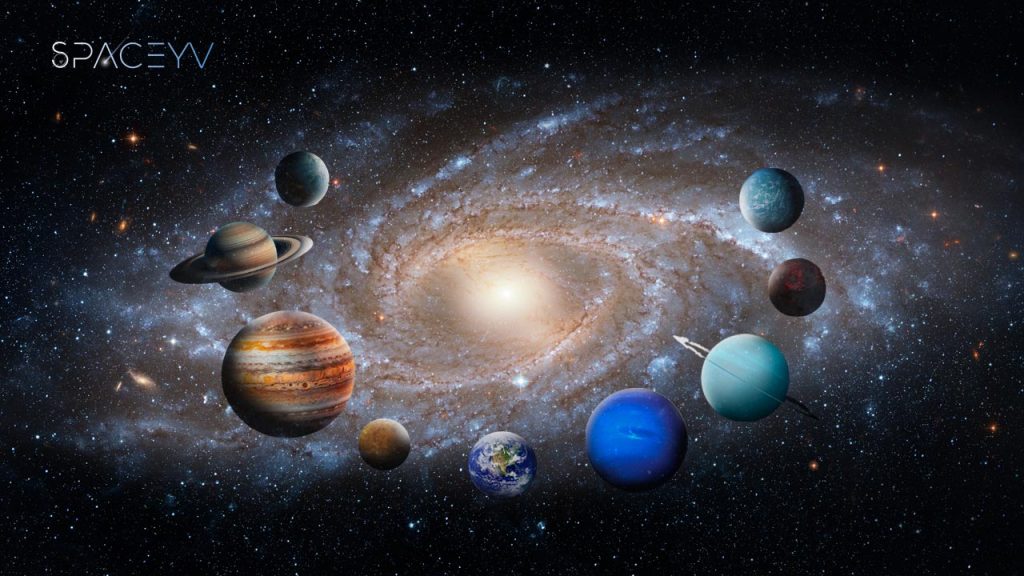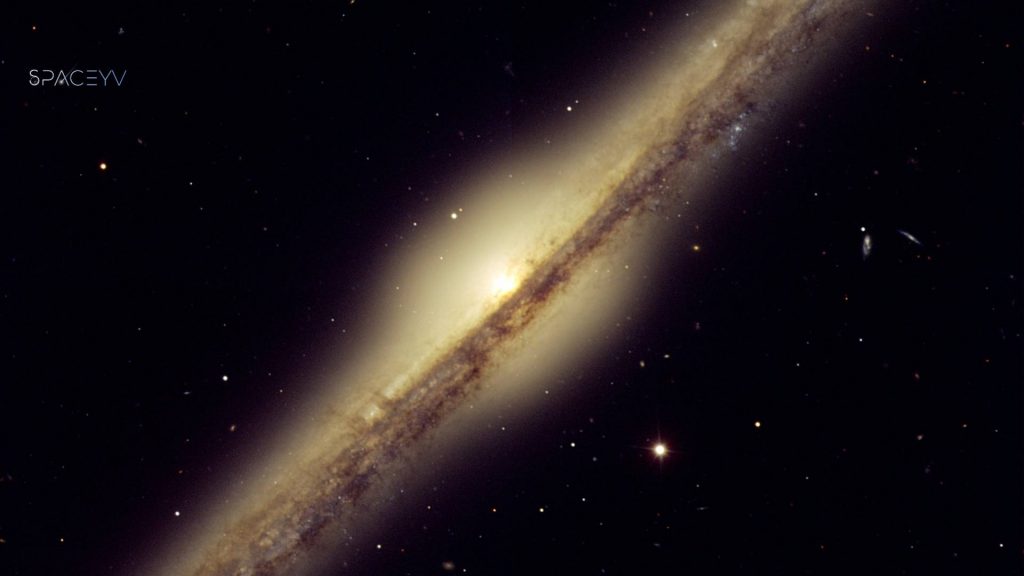How many solar systems are in milky way ?
The Milky Way, our celestial home, is a vast and intricate galaxy that holds countless wonders waiting to be discovered. Among its many mysteries lies the question: How many solar systems populate our galaxy? This inquiry delves into the depths of astrophysics and space exploration, where scientists have embarked on a journey to unveil the secrets of our cosmic neighborhood. stay with Spaceyv.com
Understanding Solar Systems
Before we can estimate the number of solar systems in the Milky Way, let’s first understand what constitutes a solar system. A solar system typically comprises a central star, such as our Sun, orbited by planets, moons, asteroids, comets, and other celestial objects bound by gravity. Each solar system is unique, with its own arrangement of planets and features.

Estimating Solar Systems in the Milky Way
The Milky Way is a barred spiral galaxy with an estimated diameter of about 100,000 light-years and contains billions of stars. The exact number of solar systems within it is challenging to determine precisely due to the sheer vastness of the galaxy and limitations in observation techniques. However, astronomers employ various methods to estimate this figure.
- Stellar Census: One method involves conducting a stellar census, which involves observing and cataloging stars within our galaxy. By extrapolating from known data about star formation rates and the distribution of stars in the Milky Way, scientists can estimate the number of stars that potentially host solar systems.
- Exoplanet Surveys: Another approach is through the study of exoplanets, planets that orbit stars outside our solar system. Over the past few decades, advancements in observational technology, such as the Kepler Space Telescope and the Transiting Exoplanet Survey Satellite (TESS), have enabled astronomers to detect thousands of exoplanets. By extrapolating these findings across the Milky Way, scientists can infer the prevalence of planetary systems.
- Galactic Models: Astrophysicists also develop sophisticated computational models of galaxy formation and evolution. These models take into account various factors such as stellar populations, star formation rates, and the dynamics of galactic interactions. By simulating the evolution of the Milky Way and its constituent stars, researchers can estimate the likely distribution of solar systems throughout the galaxy.

Current Estimates
While the exact number of solar systems in the Milky Way remains elusive, current estimates suggest that there could be anywhere from 100 billion to 400 billion stars in our galaxy. Given that most stars are believed to host at least one planet, the number of solar systems could range from tens of billions to over a trillion.
Moreover, recent exoplanet surveys have revealed that planetary systems are common throughout the Milky Way. Many stars have multiple planets orbiting them, some of which may lie within the habitable zone where conditions could support life as we know it.
Related Contents:
Largest and Smallest Planets in the universe
Galaxy, Universe & Solar systems
Implications and Future Exploration
The quest to determine the number of solar systems in the Milky Way not only enriches our understanding of our galactic home but also has profound implications for the search for extraterrestrial life. By identifying and characterizing planetary systems, astronomers can identify potential candidates for further study, including those with conditions conducive to life.
Future space missions, such as the James Webb Space Telescope and upcoming generations of exoplanet-hunting spacecraft, promise to unveil even more secrets about the diversity of solar systems within our galaxy. With each new discovery, we come one step closer to unraveling the mysteries of the Milky Way and our place within it.
FAQs about Solar Systems in the Milky Way
-
How many solar systems are estimated to exist in the Milky Way?
- While the exact number remains uncertain, estimates suggest there could be anywhere from 100 billion to 400 billion stars in our galaxy, with each star potentially hosting at least one solar system. This range implies that there could be tens of billions to over a trillion solar systems in the Milky Way.
-
Are all stars in the Milky Way expected to have planetary systems?
- While not all stars in the Milky Way are known to have planetary systems, recent discoveries of exoplanets suggest that planetary systems are common throughout the galaxy. Many stars are believed to host at least one planet, and some may even have multiple planets orbiting them.
-
What methods are used to estimate the number of solar systems in the Milky Way?
- Scientists employ various methods, including stellar census, exoplanet surveys, and galactic models, to estimate the number of solar systems in the Milky Way. These approaches involve observing stars, detecting exoplanets, and simulating galactic evolution to infer the likely distribution of solar systems within our galaxy.
-
Are there any planets similar to Earth in the Milky Way?
- While astronomers have discovered thousands of exoplanets, including some that reside within their star’s habitable zone, which could support liquid water and potentially life as we know it, the search for an Earth-like exoplanet within the Milky Way continues. Future missions and advancements in observational technology may help identify more Earth-like planets.
-
How do these estimates impact the search for extraterrestrial life?
- Identifying and characterizing planetary systems within the Milky Way is crucial for the search for extraterrestrial life. By pinpointing potentially habitable planets and studying their atmospheres and compositions, scientists can assess their suitability for hosting life. The diversity of solar systems within our galaxy increases the chances of finding worlds where life could exist.
-
What role do future space missions play in furthering our understanding of solar systems in the Milky Way?
- Future space missions, such as the James Webb Space Telescope and upcoming exoplanet-hunting spacecraft, are poised to revolutionize our understanding of solar systems within the Milky Way. These missions will enable astronomers to study exoplanets in greater detail, including their atmospheres, compositions, and potential for harboring life, advancing our quest to unravel the mysteries of our galaxy.
Conclusion
The Milky Way is a vast tapestry of stars, planets, and cosmic wonders, each telling a story of its own. While the exact number of solar systems in our galaxy remains uncertain, ongoing research and technological advancements continue to shed light on the diversity and complexity of planetary systems within the Milky Way. As we peer deeper into the cosmos, we embark on a journey of exploration and discovery that knows no bounds. Thanks for staying with Spaceyv.com



